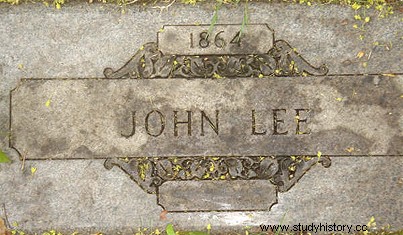When John H.G. Read he was sentenced to death, he told the judge:
The reason I am so calm is that I trust in the Lord and he knows that I am innocent.
And it seems that the Lord, destiny, luck – or who knows what – believed in his innocence because the sentence passed could not be carried out. But let's backtrack on this story.

John H.G. Read born in Abbotskerswell , Devon, England, and soon dropped out of school to work as a servant to Emma Keyse , in the nearby village of Babbacombe . In 1879 he left home to join the Royal Navy and, after spending a few years in jail for robbery, in 1884 he returned to work for Emma Keyse again. On the morning of November 15, 1884, the body of Emma Keyse appeared with her throat slit, three head wounds and partially burned. Predictably, suspicion fell on the service and, specifically, on John Lee; being the only man in the house at the time of her murder and having a wound on her arm were reasons enough to convict him.

Prison report with execution rulings
On February 23, 1885, he was sentenced to be hanged at Exeter Prison. James Berry, the prison's executioner, tested the trap on the scaffold and verified that everything worked correctly, but at the moment of execution the mechanism failed... one, two and three times . The execution was stayed and the Home Secretary, Sir William Harcourt, later commuted the death sentence to life imprisonment. After 22 years, and several appeals, John Lee was released.

Release Order
At that time the track of John Lee was lost, although it seems that he was able to leave the country to move to the US where he continued his life in anonymity. It is believed that John H.G. Read he died on March 19, 1945 in Milwaukee where a grave with his name and year of birth appeared. He was "the man who could not be hanged «.

Idea:JMNoticias
Sources and images:BBC, Side3, Murder Research
